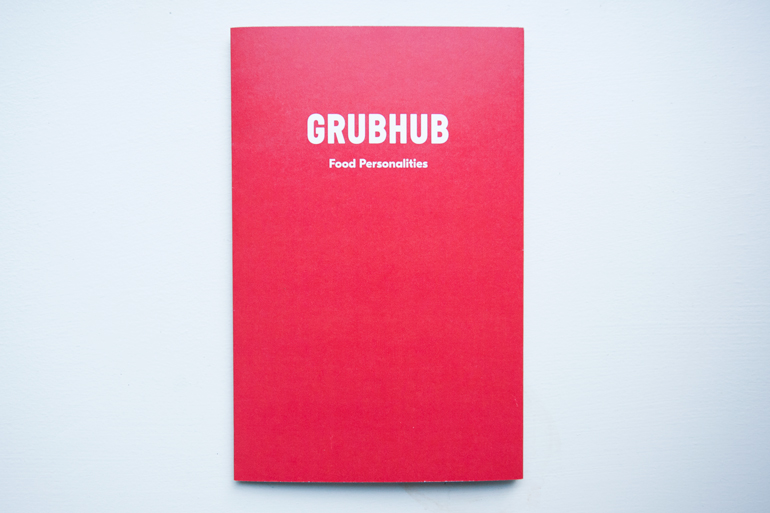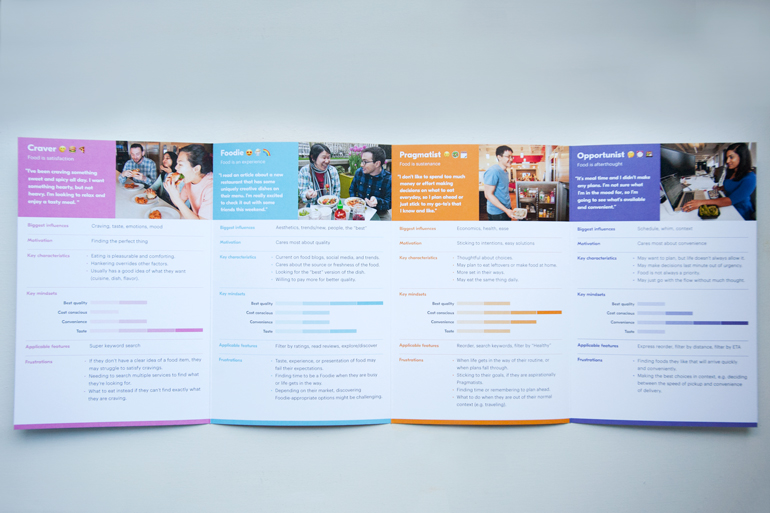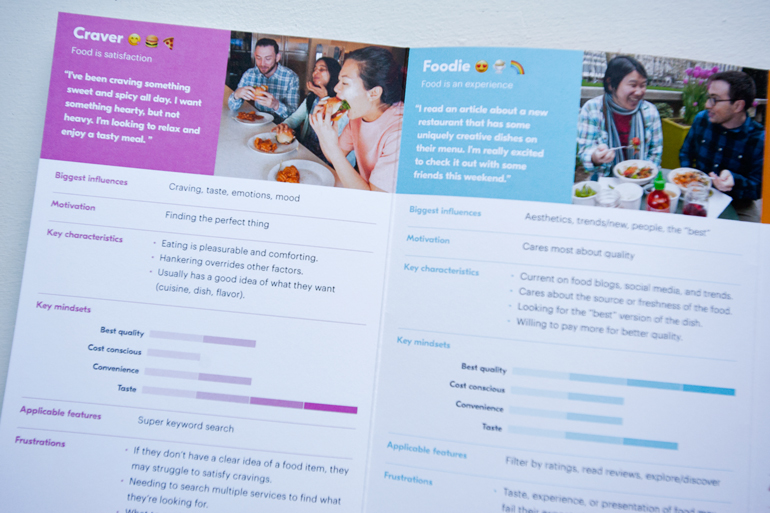Julia recruited and organized diary studies with 16 participants. Each person described themselves and spent one week documenting their thoughts, experiences, and decisions related to food through imagery and self-description. During this process, we were able to interject questioning when necessary. Seven of those were followed by video interviews in which the team was able to dig deeper into their unique circumstances.
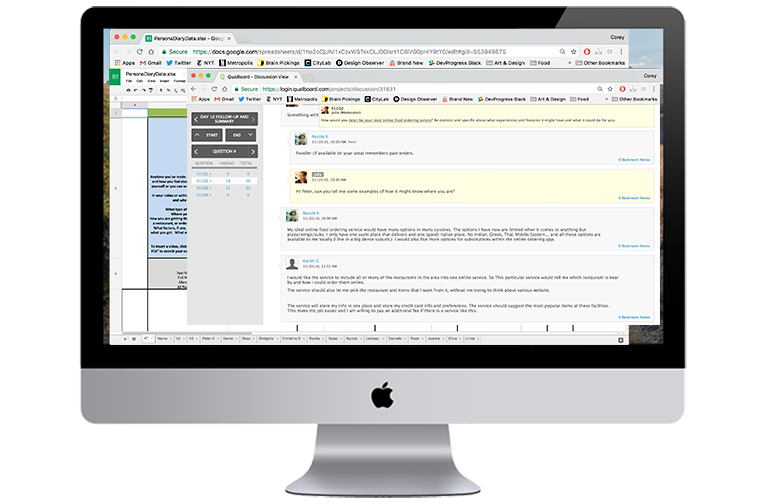
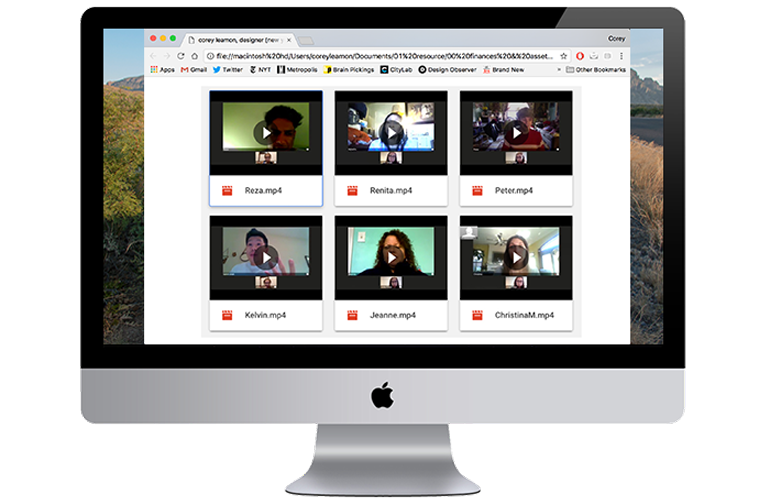
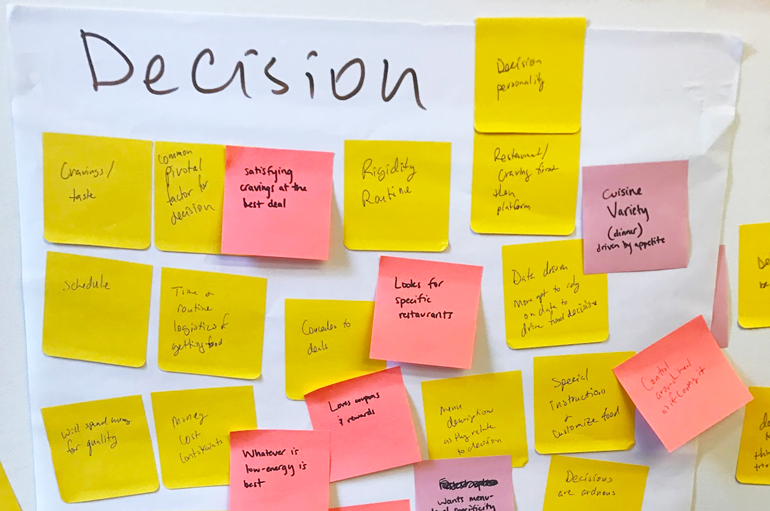
With an incredible amount of data obtained, the process of synthesizing and analyzing proved difficult, but fluid. Beginning with mapping patterns among facts and feelings: we began to identify major categories of discussion: relationship to food, motivations and aspirations, challenges, circumstances, and relationship to out-of-restaurant ordering. Still, we had little clarity on our user “types”. The team backtracked by taking two full diary studies each (with each diary being read by two people) and identifying how the participants related to our new categories. By way of moving between quiet analysis and group discussion, we soon identified key characteristics, or “personalities” among our customers.
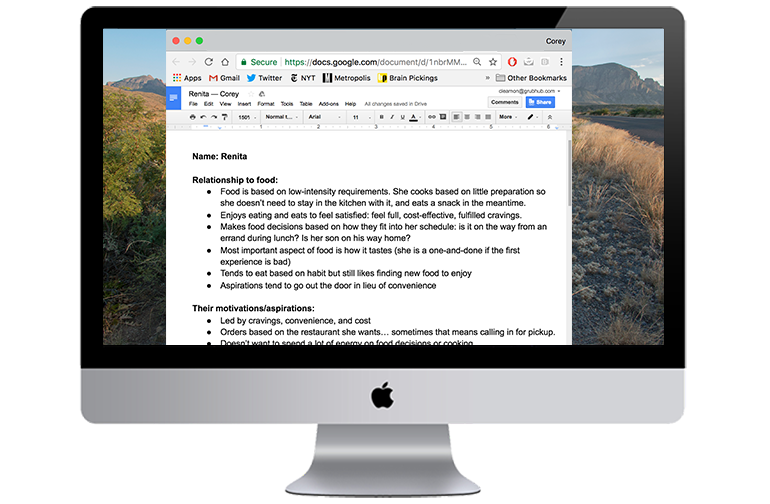
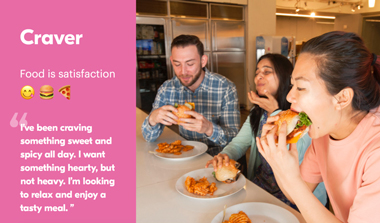
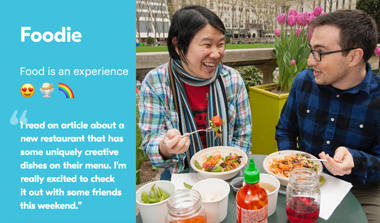
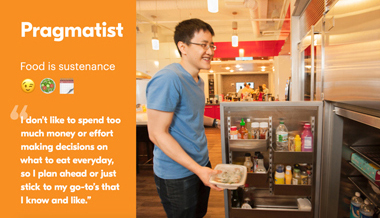
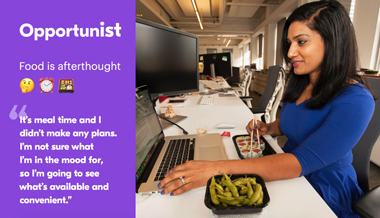
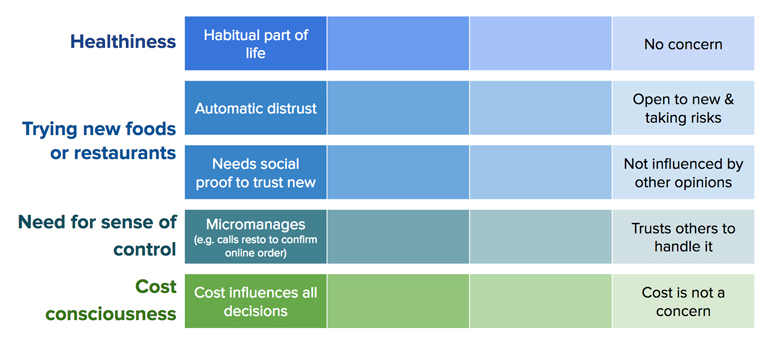
The primary behavioral attributes were understood from this process and deemed “Food Personalities”. We realized our diners were capable of exhibiting particular but various relationships with food, depending on time, circumstance, and modular secondary attributes like health, cost, and trust. This flexible, emotionally-based approach to relating to our customers was visually brought to life by our team and shared throughout the company. It is actively used by both product development and marketing, with considerations for use in customer service and for restaurant on-boarding. As living documents, further work will begin to help align with diner segmentation efforts (the when and why of eating, what drives loyalty, lifestyles, cost perception, market culture, etc) and better understand how the personalities relate to technology.
